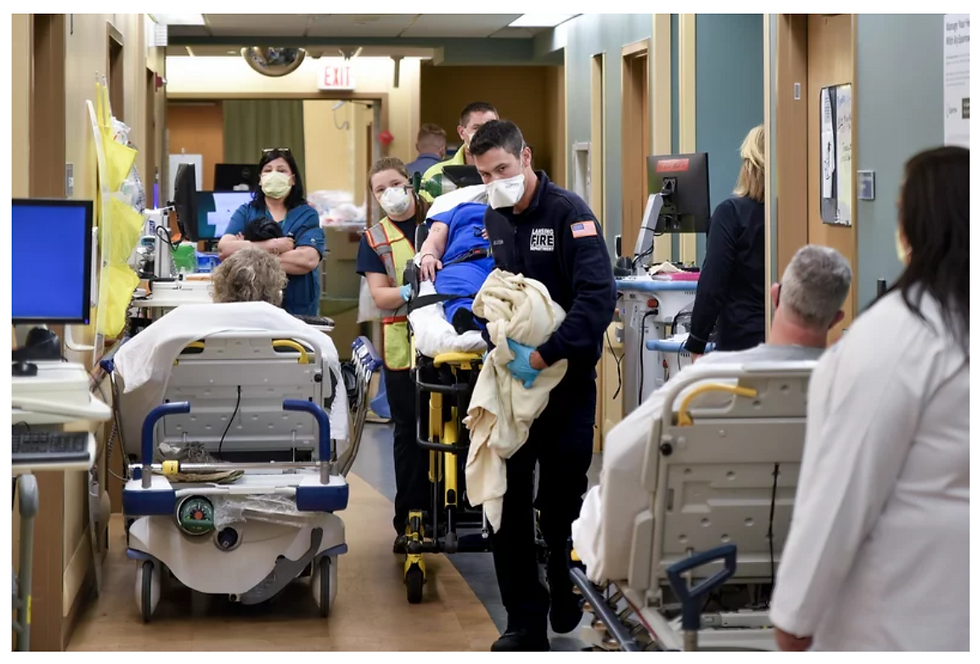What if there was an "Easy Button" for Wound Care?
- Joe Ebberwein

- Jun 11, 2021
- 3 min read
Updated: Jun 14, 2021
By Joseph Ebberwein

Why Can’t Wounds Be A Positive For Home Health Rather Than A Source Of Frustration?
Wounds are complicated, often chronic, and usually made worse due to co-morbidities. They are an area that requires a significant level of expertise to get correct – staging, etiology, formulary knowledge, dressing change frequency, accurate measurement, monitoring wound healing progression and more. Couple that with elderly populations with skin integrity issues, pressure wounds, adequate prevention protocols, etc. on top of a shortage of wound certified nurses, and it is no wonder that many providers don’t want to deal with these patients and have avoided them if possible.
Some organizations embrace the challenge and are staffing up to handle these patients. The Acute referral sources need good provider follow-up to prevent readmissions and reoccurrences. CMS is preparing to track the outcomes and eventually build in penalties for underperformance. With the shift towards value-based medicine, wound management is a required competency, especially for aging populations. Besides, no one wants to see patients suffering from chronic wounds that you merely maintain, but can’t get healed.
It is also difficult to transport and transition patients into different care settings with the different sets of protocols, order changes, supplier changes, and transportation issues so those referrals are not taken lightly.
But, staffing up isn’t really that easy and usually isn’t the complete answer. What can you do when you have had an open job position for a certified wound nurse open for the last year? Even organizations with WOCNs still struggle with consistency and a programmatic approach to wound management that drives consistency and profitability. It is a pervasive problem that is a struggle for everyone in Post-Acute. Less than 10% of wound-certified nurses work in the post-acute provider setting. Many are clinicians who don’t really know how to build a wound program. The right expertise is hard to find and hard to keep.
Yet, you do the best you can for your patients.
But, does it really have to be this difficult? Can’t it be easier, simpler, better, and more profitable? Where is the EASY button, right?
Under PDGM in home health, it doesn’t have to be a problem. It should translate to 25% higher reimbursement rates. For many providers, they are doing ok. But, ok could be great with the right help.
If you could couple that with a partnership that could bring the wound management expertise to work collaboratively with your team and take the difficult parts of managing wound patients – measurement and documentation, staging and etiology, formulary selection, evidence-based treatment planning, coaching bedside nurses on care plan changes, educating staff on best practices, advanced dressing selection to reduce the frequency of dressing changes, and patient outcome monitoring – AWESOME!
How about doing it in a 30-day capitated episodic payment model that aligns with PDGM and provides a framework for benchmarking and continuous process improvement – FANTASTIC!
What if you could do it in a way that we can control costs, drive better outcomes, and significantly lower staff time while actually managing the wound better and at a significantly higher margin coupled with all of the reporting requirements for PDGM – PRICELESS.
Now, do it in a way that we can actually make money within the reimbursement framework sufficient that we want to market to our referrers that we have an excellent wound patient program – SIGN ME UP.
Wound management is complicated and requires extensive expertise to manage those patients with the best clinical and financial outcomes. It needs to be managed as a specialty with the right people, process, technology, and systematization that ensure maximum quality, outcomes, and partner profitability.
In short, you need a Wound Management partner that will drive the results your organization and your patients want to manage your complicated wound patients' healing process.
Corstrata enables Post-Acute Providers to develop Wound Programs of Excellence with its Proprietary Wound Benchmarking Scorecard, operational consulting, and Nurse2Nurse wound consults for the management of complex & chronic wounds for Post-Acute Providers in home health, hospice, rehab hospitals, and nursing homes. To learn more, contact Corstrata for a conversation to see how we can help make your wound management program easier and more profitable.




Comments